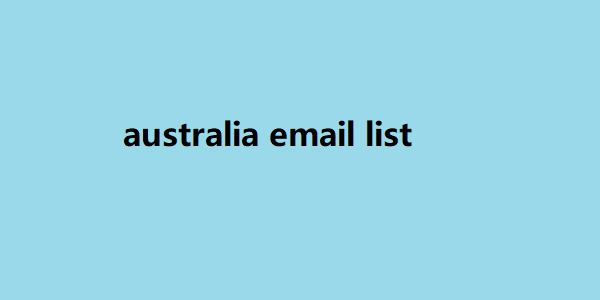Did you know that email marketing offers an average ROI of $42 for every $1 spent? (Source: Tornasol ) This is a powerful ROI that shows the potential of email marketing as a highly profitable channel. A well-written email marketing campaign can make the difference between simply reaching customers and engaging with them on a deeper level. This article will walk you through the essential steps to creating a successful email marketing strategy that drives results.
We’ll explore the value of email marketing, how to set clear goals, how to build and segment your list, how to create engaging content, how to leverage personalization, how to choose the right timing, and how to optimize deliverability and engagement. Let’s dive in.
Understanding the Importance of Email Marketing
Why Email Marketing is Important
Email marketing has become an essential tool for businesses looking to maximize their marketing effectiveness and return on investment (ROI). Known for its impressive ROI, email marketing allows businesses to reach a targeted audience directly, building relationships and encouraging conversions. Unlike social media posts or ads that can get lost in a crowded feed, emails are delivered directly to customers’ inboxes, creating a more personal and direct connection. This unique channel offers several benefits that make it highly valuable for brands looking to engage audiences, build loyalty, and drive sales.
Direct communication with a target audience
Email marketing allows for direct communication with a highly targeted audience. Businesses can segment their email lists based on customer preferences, behaviors, and demographics, ensuring that each subscriber receives content tailored to their interests. This targeted approach results in higher engagement, as recipients are more likely to open, read, and act on emails that are relevant to them. The inbox functions as a personal space for customers, and by sending well-crafted emails, brands can create an intimate experience that feels personalized and valuable, building trust and building relationships over time.
Integration with broader marketing strategies
Email marketing doesn’t exist in isolation; it works best when integrated with other digital marketing strategies, such as content marketing, social media, and SEO. For example, an email marketing campaign can be used to distribute blog content drive traffic to social media profiles, or promote exclusive content that enhances SEO initiatives. This multi-channel approach amplifies brand visibility and reinforces messaging across different platforms, making it easier to reach customers where they are most active.
For example, a business can use social media to increase brand awareness and grow its email list, and then use email marketing to engage potential customers with valuable content, personalized offers, or product updates. By integrating email marketing with other channels, businesses can create a cohesive, comprehensive marketing strategy that maximizes engagement, encourages conversions, and supports long-term growth.
Steps to follow for a successful email marketing campaign
- Set clear goals for your email marketing campaign
Setting clear goals is essential to the success of any email marketing campaign. Start by identifying your primary objective, whether it’s to increase sales, boost customer retention, build brand awareness, or achieve something else. Defining a specific goal will help you guide your messaging and overall approach. To measure success, focus on key performance indicators (KPIs) such as open rates, click-through rates (CTR), and conversion rates. These metrics provide valuable insight into how your emails are resonating with subscribers australia email list and whether they’re achieving the desired impact.
- How to create and segment your email list
Building Your Email List
Grow your email list through strategies like website signup forms, social media promotions, and content downloads. Offer value in exchange for contact information, such as exclusive discounts, helpful guides, or early access to new products.
Segmenting your list for maximum effectiveness
Segment your email list based on demographics, purchase history, or user behavior to send highly relevant messages. Segmentation improves engagement as subscribers receive content tailored to their specific needs and preferences.
- How to Write Engaging Email Content
The subject line is your first chance to grab attention. Make it eye-catching by using personalization, urgency, or curiosity. Try to keep it short and punchy—after all, it’s what determines whether the email is opened or not.
How to design an attractive email text
Write clear, conversational, purposeful copy that resonates with your audience. Use a compelling call to action (CTA) to guide readers toward your desired outcome, whether that’s exploring a product, signing up for a webinar, or making a purchase.
Incorporating visual elements
Use images, videos, and infographics to complement your message and capture readers’ attention. Visuals help break up text, highlight important points, and create a memorable experience.
Best practices for email design
Optimize emails for mobile with a responsive design that looks good on any device. Maintain a clean, organized layout that guides readers smoothly through the content.
- Personalization and automation
Personalization is a powerful tool in email marketing, allowing you to use customer data to create emails that feel relevant and timely. Whether you address recipients by name or recommend products based on past purchases, personalized content makes readers feel valued and understood.
Setting up automated campaigns further enhances this approach, allowing you to stay connected with subscribers without manual effort. Some examples of automated emails include welcome series for new subscribers, how to use long tail local phrases abandoned cart reminders , and birthday messages, all of which drive engagement and encourage subscribers to take action.
The benefits of automation go beyond convenience; it also ensures consistency, connecting with subscribers at the perfect time to maintain engagement and foster loyalty. Popular tools like Mailchimp, HubSpot, and Active Campaign make it easy to set up, track, and optimize these automated campaigns, helping you create a meaningful, efficient, and personalized email strategy.
How to Find the Right Time to Send Emails
Timing is very important. Research shows that emails sent during the week (especially Tuesday and Thursday mornings) tend to perform well. However, optimal timing can vary depending on the audience, so testing is essential.
Determine email frequency
Find a balance between staying top of mind and overwhelming your subscribers. Regular updates are beneficial, but too many emails can cause them to unsubscribe.
A/B testing for optimal timing
Experiment with sending times and analyze the results to refine your approach. A/B testing allows you to see what resonates most with your audience.
6. Optimizing for deliverability
Maximizing email deliverability is essential to ensure your messages consistently reach your audience’s inboxes, leading to higher engagement and improved campaign performance. Email deliverability can be impacted by factors such as spam filters, list status, and regulatory compliance. Below are some strategies to optimize deliverability and improve the likelihood of reaching your subscribers.
How to avoid spam filters
To prevent emails from ending up in the spam folder, it’s critical to follow best practices that indicate your messages are legitimate and valuable to recipients. One of the first steps is to use a trusted sender address. If your domain has a solid reputation with email service providers (ESPs), your emails are more likely to be trusted and delivered to inboxes. Avoid using free email domains (like Gmail or Yahoo) for business emails, as they are often seen as less trustworthy.
It’s also important to avoid spammy words in your subject lines and the body of your email. Spam filters can flag words and phrases like “free,” “urgent,” “buy now,” and “act now,” reducing the chance of your emails reaching the inbox. Also, avoid using excessive punctuation, writing in all caps, or overly promotional language. These details may seem minor, but they can play a big role in helping your emails avoid spam filters.
How to maintain a healthy email list
A healthy email list improves deliverability and ensures your messages reach an engaged audience. Cleaning Up Your Email List cmo email list Removing inactive or unengaged subscribers is essential to list health. When emails are repeatedly ignored or not opened, ESPs may interpret this as a lack of interest and mark your emails as spam. Removing inactive subscribers not only improves deliverability, but also increases your open and click rates, making your list more effective.
You can also set up reactivation campaigns to attract subscribers who haven’t engaged with your emails for a long period of time. If these subscribers remain inactive after a few attempts, it’s best to remove them from your list. A focused, engaged audience is much more valuable than a large list with little engagement.
Compliance with email marketing regulations
Complying with regulations like the GDPR (General Data Protection Regulation) and the CAN-SPAM Act is critical to maintaining your brand’s reputation and avoiding legal issues. Compliance includes obtaining clear, informed consent from subscribers, meaning they must actively opt in to receive your emails. This helps build a permission-based list and reinforces trust with your audience.
Offering easy unsubscribe options is also a requirement of these regulations. All emails must include a visible and easy way for recipients to unsubscribe if they no longer wish to receive your communications. Periodically updating your list to reflect unsubscribe requests demonstrates respect for subscribers’ preferences, which positively impacts your reputation as a sender.
Finally, segmenting your audience based on engagement can help you send more relevant content, reducing the risk of spam complaints and unsubscribes. When emails are tailored to subscribers’ interests and behaviors, they’re more likely to engage with your content, strengthening your brand’s reputation with ESPs.

